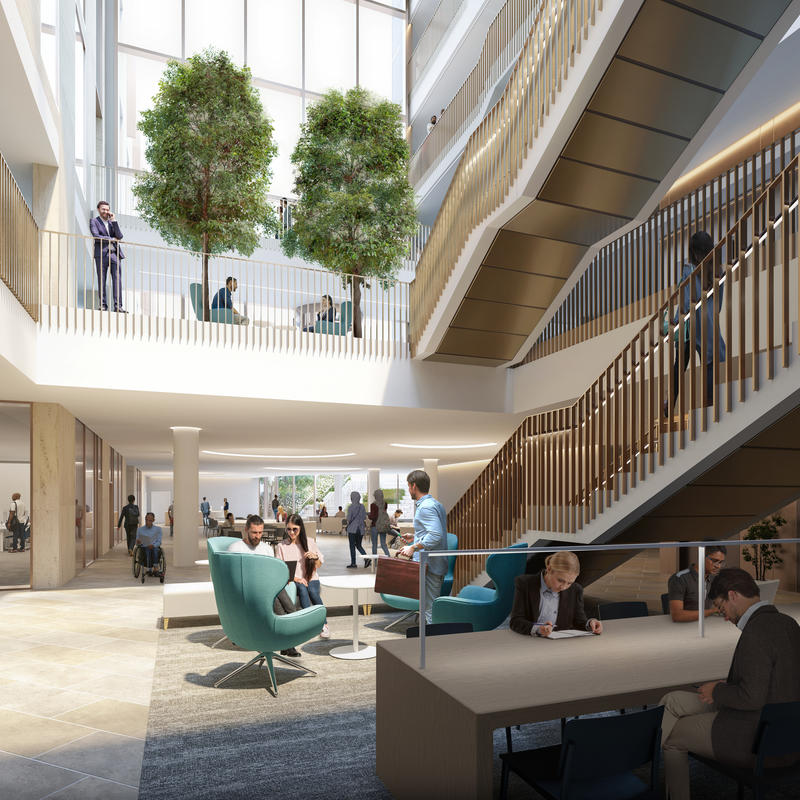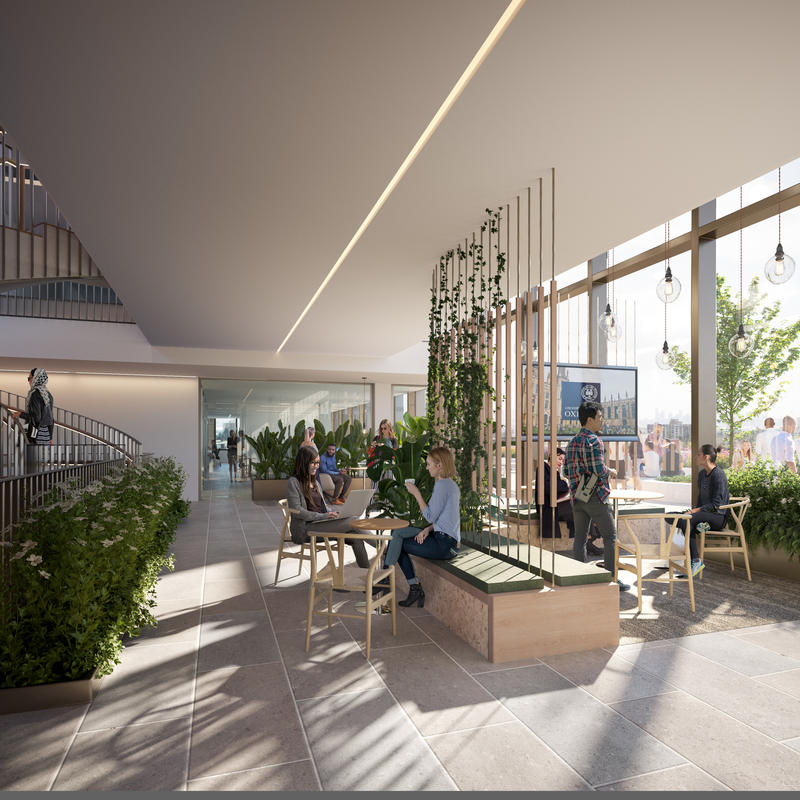Interior Design Concepts
Internal Design Drivers
In November 2019, the architects NBBJ hosted an interior-focused workshop with future users of the building. Their goal was to review key design areas, focusing on but not limited to: the atrium, offices, laboratories, cafés, and brand and identity considerations.
Together, NBBJ and users reviewed images based on 'look and feel', as well as functional elements to learn what the two Departments were aiming to achieve within the new building.
Following this workshop, the design team combined these outcomes with the (1) six Strategic Objectives outlined by the University, to derive (2) the Internal Design Drivers. These Design Drivers have been guiding the development ever since, to ensure that users' wants and needs are incorporated within a holistic design.
Shared Ecosystem Concept
When breaking down the building into its simplest forms, the flex block, atrium and office block, the central atrium acts as a woven tapestry that stitches together the office block & flex block.
Consequently, the atrium is an instrumental component in connecting the offices, labs and teaching spaces. The internal concept focuses on what the design team has coined a (3) “Shared Ecosystem;” this ecosystem manifests within the atrium terraces and hosts multiple work points that foster community. These different work points support a litany of activities focusing on learning, display, lounging, meeting and relaxing.
These terraces intrinsically become (4) social platforms for engagement. They encourage different activity types per floor based on adjacent program and user needs. These social platforms ascend from the lower ground shared space and continue vertically throughout the atrium. By doing so, this adds an additional layer of connectedness, intuitive wayfinding and continuity throughout the internal design.
The Shared Ecosystem design concept for the new Life & Mind Building brings to life authentic spaces for both academic Departments to engage and enjoy.

The function of the lower ground shared space is designed for students and staff to utilise as an extension of their learning environment with areas to study, meet, and foster community. Additionally this level is designed for public outreach and engagement. It is intended for use by the public around public events and members around conference sessions.
Shared Ecosystem Concept - By Level
The lower ground brief components contain primarily teaching spaces. As a result, the Shared Ecosystem on this level focuses on learning and engaging.
This shared space is designed as an extension of the learning environment for students to meet, collaborate and study in between classes. Additionally, this level is designed for public outreach and engagement. It is intended for use by the public around public events and conference sessions.
The Shared Ecosystem theme on the ground floor focuses on display and identity. This floor functions as the main entrance into the building. Consequently, the design goal was to have both People and Planet on show, as soon as you walk through the front doors. There are two trees planted at the entry symbolising the two departments, Experimental Psychology and Biology, coming together under one roof.
The Shared Ecosystem theme on Level 01 centres on lounge type space and seating. This space is intended for Experimental Psychology staff to use as informal waiting or meeting space.
The Shared Ecosystem theme on Level 02 focuses on different types of meeting space. This space is intended for staff to use as informal collaboration space and is also equipped with multiple power sources for technology when needed.
The Shared Ecosystem theme on Level 03 focuses on relaxing environments. This internal atrium space is adjacent to a large exterior terrace on Level 03. To capitalise on this adjacency, the design is infused with greenery throughout. This space is intended for staff to use as informal meeting space but in a more relaxed, plant filled environment compared to the meeting space on Level 02.
The Shared Ecosystem theme on Level 04 is designed as a quiet working environment and for knowledge exchange that takes advantage of the great views of the Oxford skyline.

The internal terrace on level 03 is adjacent to a large external rooftop terrace. The meeting pockets on this level are infused with greenery to tie into the outdoors and provide a relaxing environment for users.
Find out more about other Design Concepts within the Life and Mind Building:
More Design Concepts


